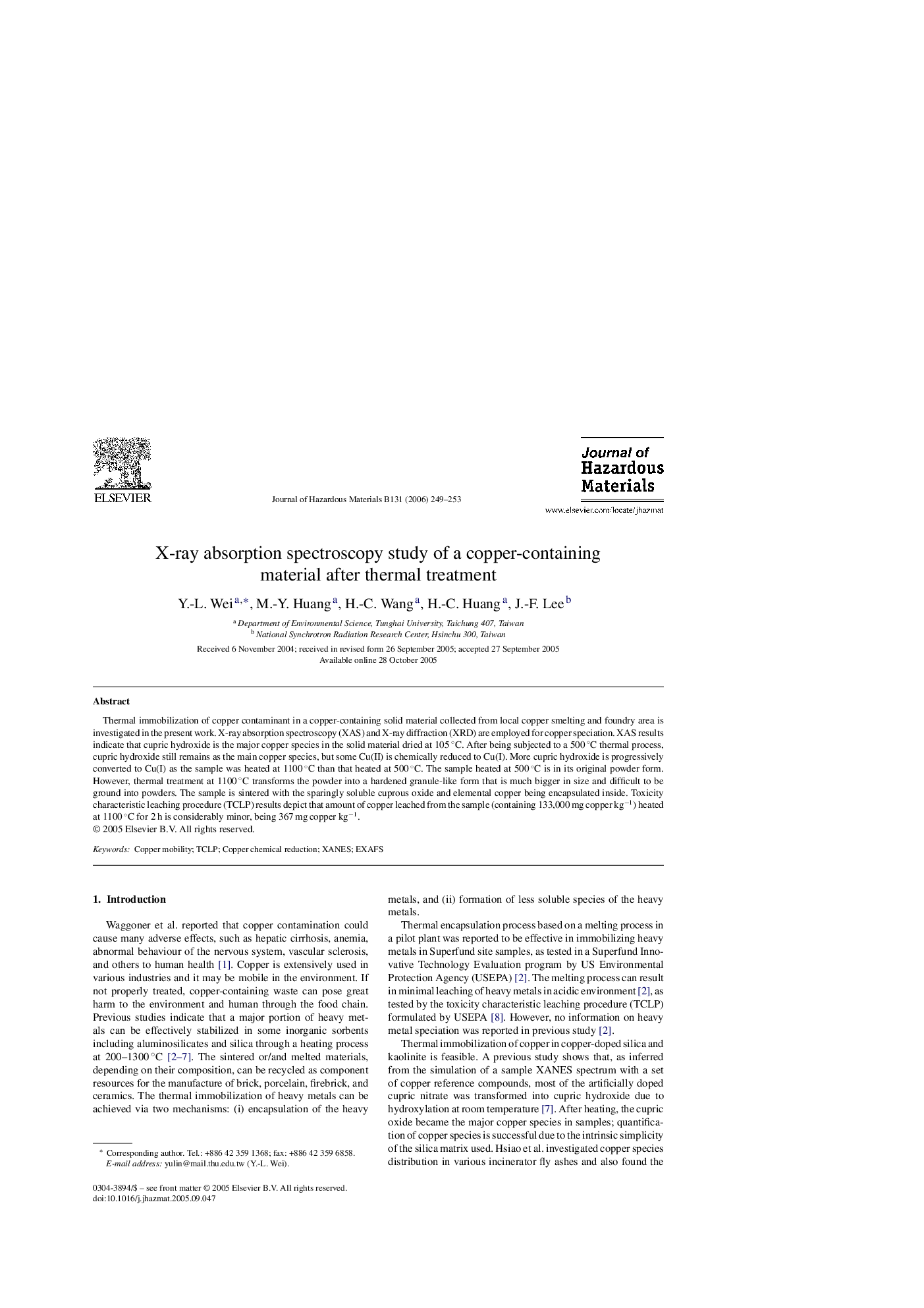| Article ID | Journal | Published Year | Pages | File Type |
|---|---|---|---|---|
| 585853 | Journal of Hazardous Materials | 2006 | 5 Pages |
Thermal immobilization of copper contaminant in a copper-containing solid material collected from local copper smelting and foundry area is investigated in the present work. X-ray absorption spectroscopy (XAS) and X-ray diffraction (XRD) are employed for copper speciation. XAS results indicate that cupric hydroxide is the major copper species in the solid material dried at 105 °C. After being subjected to a 500 °C thermal process, cupric hydroxide still remains as the main copper species, but some Cu(II) is chemically reduced to Cu(I). More cupric hydroxide is progressively converted to Cu(I) as the sample was heated at 1100 °C than that heated at 500 °C. The sample heated at 500 °C is in its original powder form. However, thermal treatment at 1100 °C transforms the powder into a hardened granule-like form that is much bigger in size and difficult to be ground into powders. The sample is sintered with the sparingly soluble cuprous oxide and elemental copper being encapsulated inside. Toxicity characteristic leaching procedure (TCLP) results depict that amount of copper leached from the sample (containing 133,000 mg copper kg−1) heated at 1100 °C for 2 h is considerably minor, being 367 mg copper kg−1.
